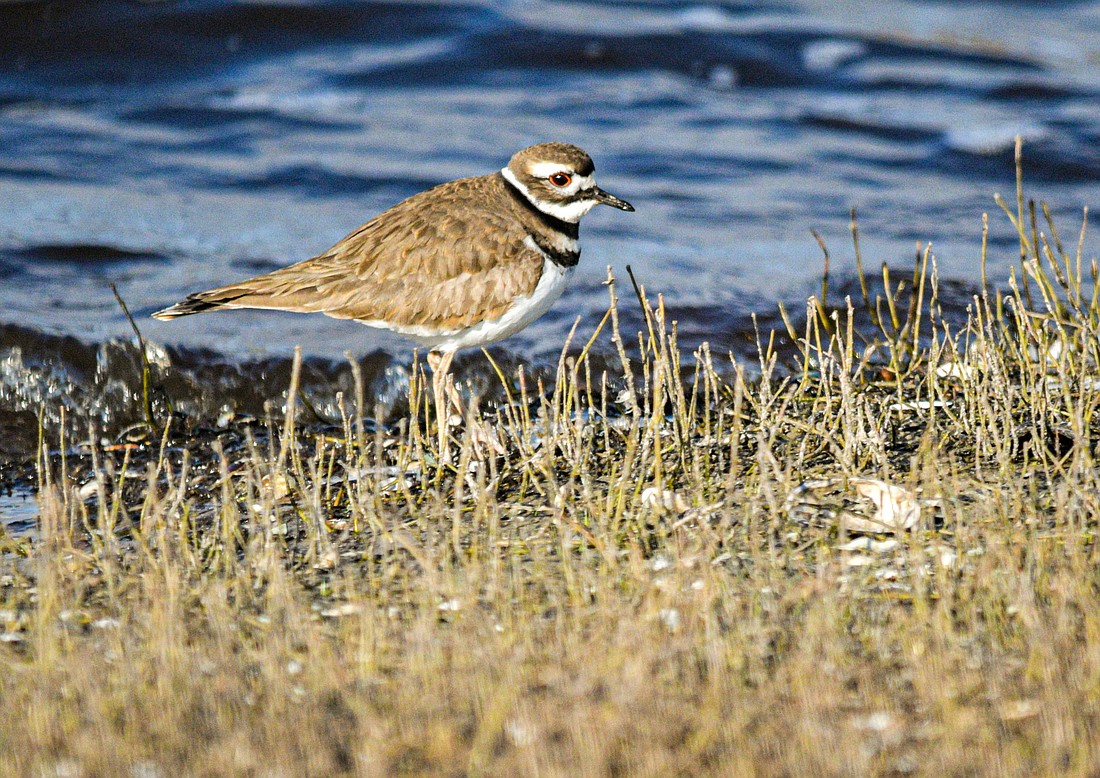- November 19, 2025
-
-
Loading

With their bright red eye rings, and two distinctive black breast-bands, killdeer are a striking species of plovers. In response to human expansion, these shorebirds, unlike other plovers, have adapted to live in upland areas, far from water. You can find them in open areas with short or sparse vegetation, such as golf courses, airports, and extensive lawns. They will also nest on gravel parking lots and rooftops
Like all plovers, killdeer nest on the ground, and their chicks are precocial, which means they leave the nest soon after hatching and feed themselves. As ground nests and flightless chicks are extremely vulnerable to predators, killdeer have multiple adaptations that help them protect their next generation. First, their nests, which are shallow scrapes, usually in bare sand or gravel but occasionally among sparse vegetation, have no physical nest structure that would draw attention. And, the coloring of their eggs and chicks blends into the environment, thus enabling them to avoid detection by predators.
Killdeer are also known for a common plover distraction tactic for protecting their eggs and young; the “broken wing display.” When an adult bird notices a predator (which includes humans) near its nest or young, it moves away, dragging one or both wings, while calling loudly to further draw attention to itself.
Predators follow, assuming it is injured, and can be therefore easily caught. Once the intruder has been drawn far away from the nest or the chicks (which in the meantime assume a protective stance, crouching perfectly camouflaged on the ground), the killdeer quickly flies off.
And the predator, no longer a threat, is left bewildered, and behind.
Save our Seabirds is a non-profit organization whose mission is to rescue and rehabilitate sick and injured birds, releasing as many as they can, while educating our community about avoiding injuries and preserving habitats.